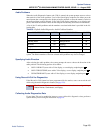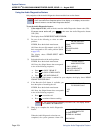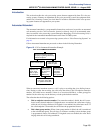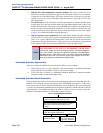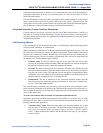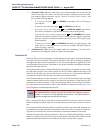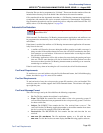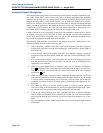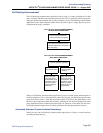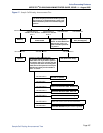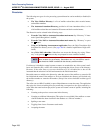
Voice Processing Features
INTER-TEL
®
CS-5200/5400 ADMINISTRATOR GUIDE, ISSUE 1.1 – August 2005
Automated Attendant Custom Audiotex Recordings
Page 261
If the Recall Destination fails to answer a call, it is automatically sent to the recall destination’s
programmed Attendant. If the call is not answered there, it is disconnected after the Aban-
doned Call timer expires.
If an invalid number is dialed, the caller is prompted to enter another number. If a caller fails to
enter a number before the Inactivity Alarm timer expires, the caller is prompted again. The
caller cannot access trunks or enter feature codes through the Automated Attendant applica-
tion. Trunk access codes and feature codes are considered invalid numbers.
Automated Attendant Custom Audiotex Recordings
Custom audiotex recordings are made using the Voice Mail Administrator’s mailbox as
described on “Creating Audiotex Recordings” on page 65. Each recording is associated with a
recording number and assigned to the application(s) in DB Programming or using the System
Administrator’s mailbox.
Call Screening Options
Calls transferred from the Automated Attendant or a Call Routing Announcement application
can be screened, announced, or unannounced.
When an Automated Attendant or Call Routing Announcement application receives a call, and
the caller enters an extension number, the phone-programmed Transfer Method determines
how the call is transferred. Transfer Method flags can be programmed in the database by the
service technician, but if allowed in mailbox programming, they can also be programmed by
the mailbox user. Transfer Method options include:
• Announce Only: The caller is asked to state his or her name. Then the call is trans-
ferred to the associated extension number. When the endpoint user answers the transfer,
the application plays the caller’s name and completes the transfer.
• Screened: The caller is asked to state his or her name. Then the call is transferred to the
associated extension number. When the endpoint user answers the transfer, the applica-
tion plays the caller’s name. The endpoint user has the options of replaying the name,
sending the call to Voice Mail (if the extension has a mailbox), transferring the call to
another extension, accepting the call, or rejecting the call.
• Unannounced: The call is transferred to the associated extension number after the
Voice Processing Unit checks the endpoint to determine its status (busy, available, ring-
ing, etc.). This is the default method.
In a network setting, an external voice processing system can provide call screening for a desti-
nation extension on another node. However, the node where the external voice processing sys-
tem is connected must have an off-node device programmed for the destination extension and
access to the remote node.
To receive an Announce Only, Screened, or Unannounced transferred call:
Depending on the Transfer Method programmed for the mailbox or extension ID, one of the
following will occur when a transferred call is received from the automated attendant or a Call
Routing Announcement application:
• “Announce Only” Calls: When the caller enters your extension number, the system
asks the caller to record his or her name. The Voice Processing Unit then places a pri-
vate call to your endpoint. When you answer, it plays “You have a call from (caller's
name).” It then completes the transfer, and the transferred call rings at your endpoint.
Answer as usual.



